GD Jayalakshmi - Smithson and Serra: Beyond Modernism? (2003)
Thursday, February 28, 2008
Download this at KaraGarga.
Smithson and Serra: Beyond Modernism?
GD Jayalakshmi for BBC and the Open University
Robert Smithson and Richard Serra both believed that sculpture should have a dialog with its environment. This program explores the challenging dialectic of the site-specific sculpture of Smithson and Serra through examples of their work. In an interview, Serra discusses the aspects of time and context in relation to his art as well as the influence of Smithson. Two sculptures of Richard Serra are shown in an urban environment - Fulcrum in the Broadgate development at Liverpool Street in London and Tilted Arc in New York - the latter has since been destroyed. Spin Out, a tribute to Robert Smithson, is in a rural site at the Kroller-Muller Museum in Holland. Robert Smithson's work is represented by Broken Circle, Spiral Hill, which is in a disused quarry in north Holland. Smithson, who died in 1973, greatly influenced Serra's work. Originally produced in 2002 as a program in the BBC television series: Modern art, practices and debates. This film was originally available only to education institutions, but is no longer available at all. With wonderful interviews by fiesty UK Modern Art Historian Paul Wood.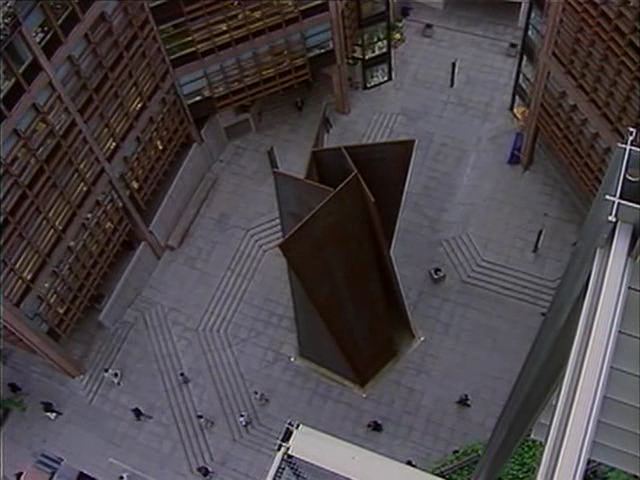
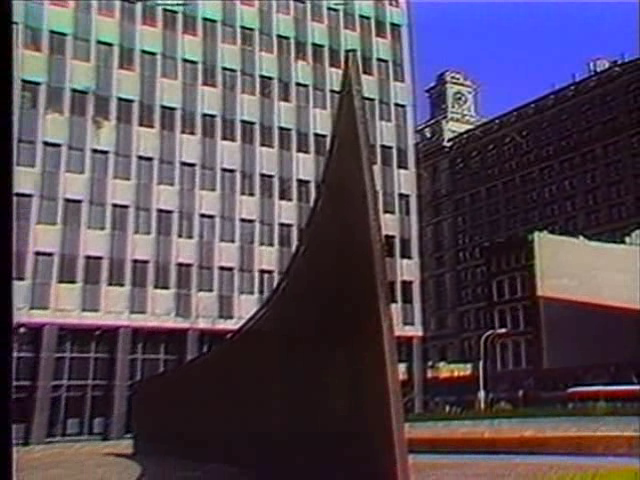

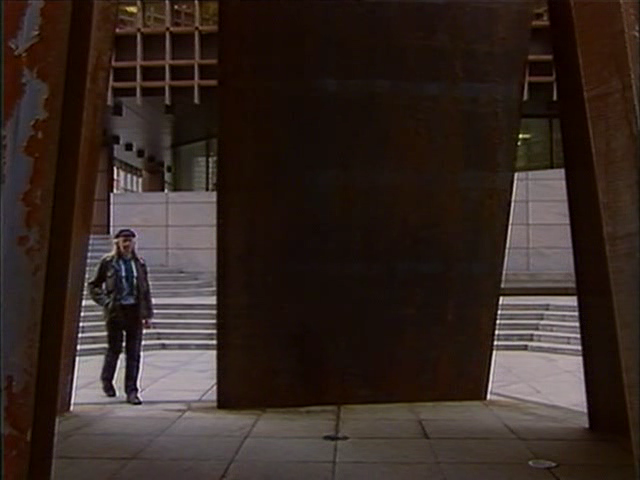
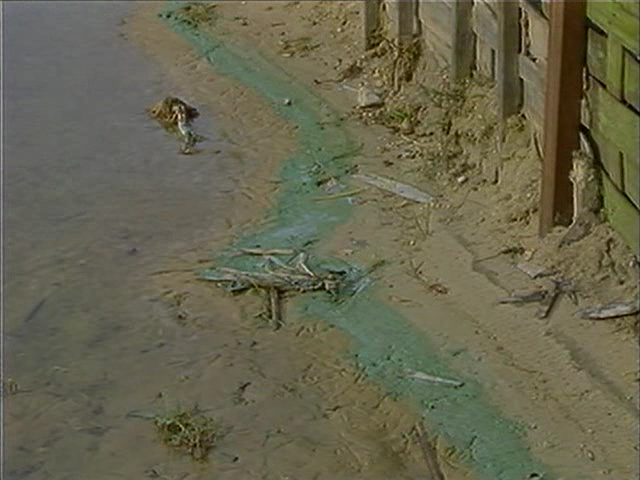
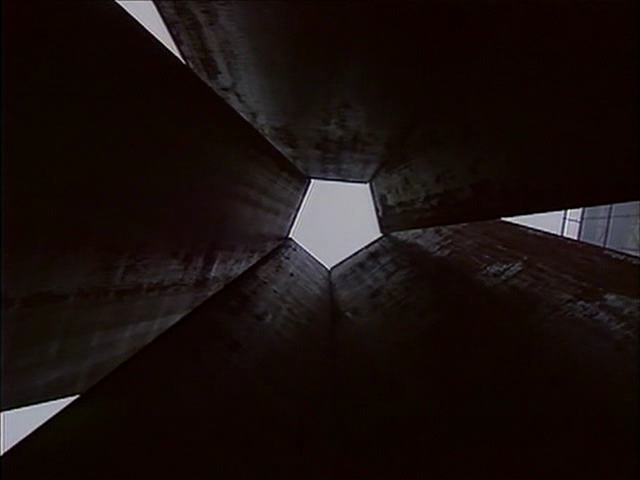
Download this at KaraGarga.
at 9:04 PM
Lynda Benglis - Female Sensibility (1973)
Tuesday, February 26, 2008
Download this at KaraGarga.
As two heavily made-up women take turns directing each other and submitting to each other's kisses and caresses, it becomes increasingly obvious that the camera is their main point of focus. Read against feminist film theory of the "male gaze", the action becomes a highly charged statement of the sexual politics of viewing and role-playing; and, as such, is a crucial text in the development of early feminist video.
"This video is Benglis's emphatic response to the notion of a distinctly feminine artistic sensibility and to the belief in a necessary lesbian phase in the women's movement—ideas that were often debated in the early 1970s."
—Susan Krane, "Introduction", Lynda Benglis: Dual Natures (Atlanta: High Museum of Art, 1991)
This title was in the original Castelli-Sonnabend video art collection.

Sculptor Lynda Benglis executed a number of videos in the mid 1970s, continuing her exploration of female sexuality and identity—an overriding theme in her work. The interest in human form and presence in her process-oriented sculptural work finds its way into her self-reflexive, investigative videos. Benglis aggressively uses the properties of the video medium to expose the process and limitations of the form—for example, re-shooting footage on the monitor and technically manipulating the image on screen. In this way, Benglis negotiates a personal space for herself, maintaining a deliberate distance from the medium. Using her own body and creating multiples of her image, Benglis interrogates the relation of the self to the body—focusing on the interface between our inner and outer realities. Linking art world practice to feminist discourse she produced Home Tape Revised, Female Sensibility, and How's Tricks—which together read as an anthropological study, each work forming a chapter in the "woman as nature/woman outside of culture" continuum. Within the context of feminist film theory of the gendered gaze, and contemporary theories of authorship, the importance of Benglis's video work emerges. Sensitive not only to debates of orginality and the construction of the artistic subject, Benglis's work consistently critiques what are believed to be video's "inherent" properties: the sense of "real" time, its supposedly immediate and truthful relationship to the world, and its privileged viewpoint in relation to events.
Download this at KaraGarga.
at 10:27 AM
Bruce Nauman - Art Make-up (1967-68)
Download this at KaraGarga.
Art Make-Up
Bruce Nauman
1967-68, 40 min, color, silent, 16 mm film
No. 1, White 1967, 10 min, color, silent, 16 mm film
No. 2, Pink 1967-68, 10 min, color, silent, 16 mm film
No. 3, Green 1967-68, 10 min, color, sound, 16 mm film
No. 4, Black 1967-68, 10 min, color, sound, 16 mm film
In each of these four related films, the artist applies a successive layer of colored makeup (white, pink, green, and finally black) to his face and upper torso. While he masks himself literally, the title implies that in so doing he also creates himself, "makes himself up." Initially the films were intended to be projected simultaneously on four walls of a room. Although this form of installation was never realized for this piece, Nauman employed the method for subsequent film and video installations.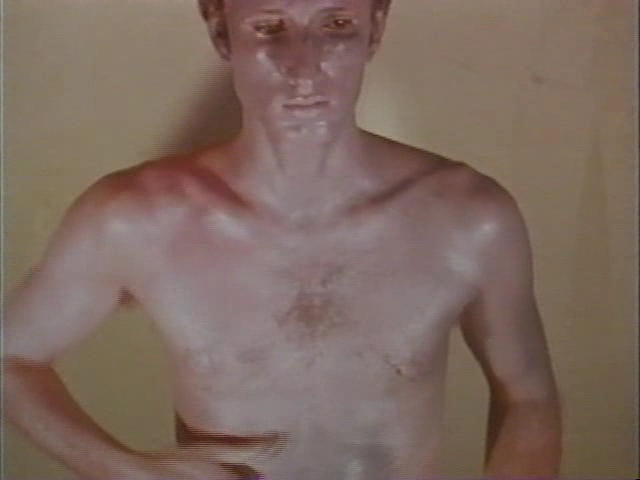
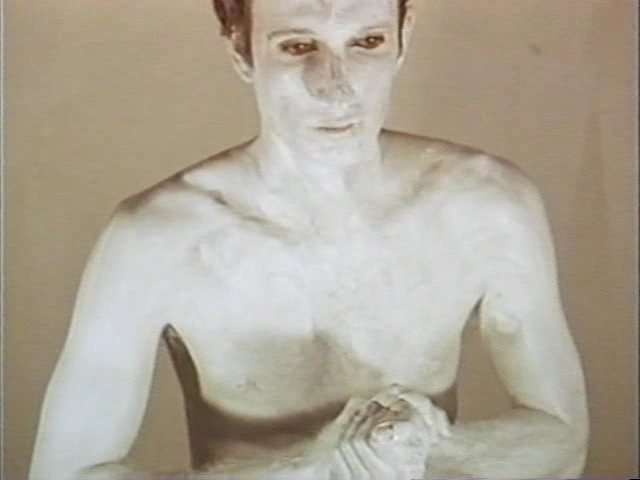

Download this at KaraGarga.
at 10:26 AM
Roger Beebe - One Nation Under Tommy (2004)
Download this at KaraGarga.
His "One Nation Under Tommy," meanwhile, is a collaborative video inspired by the "telephone game." Beebe asked a writer to concoct a script based on a "super-cynically patriotic Tommy Hilfiger commercial," had someone shoot a film based on that script, and then added three more iterations. The 15-minute finished product, he says, tracks the "mutations."
Roger Beebe is a professor of Film and Media Studies at the University of Florida. Beebe has screened his films around the globe at such unlikely venues as McMurdo Station in Antarctica and the CBS Jumbotron in Times Square as well as more traditional venues such as the Museum of Modern Art and the Pacific Film Archive in addition to numerous festivals, among them Sundance, the International Film Festival Rotterdam, and New York Underground. He has won dozens of awards including a 2006 Individual Artist Grant from the State of Florida and Best Experimental Film at the 2006 Chicago Underground Film Festival. In addition to his work as a filmmaker, he is also a film programmer: he ran Flicker, a festival of small gauge film in Chapel Hill, NC, from 1997-2000 and is currently Artistic Director of FLEX, the Florida Experimental Film Festival. (If that isn’t enough, he also owns Video Rodeo, an independent video store in Gainesville, FL.) His films and videos attempt to marry experimental forms with a documentary interest in cinema as a means of engaging with pressing issues in our everyday lives. If the works are diverse in subject matter—covering such disparate topics as women in the air force in World War II, the origin of Shaquille O’Neal’s last name, and the horrors (and beauties) of suburban sprawl—and are equally diverse in format—with work in both film (16mm, super 8mm, regular 8mm) and video—they are united by their use of an ironizing poetics to cast a sidelong glance on some often overlooked realities of 20th and 21st Century Americana.
"[Beebe’s films] implicitly and explicitly evoke the work of Robert Frank, Garry Winogrand and Lee Friedlander, all photographers of the atomic age whose Western photographs captured the banalities, crueltes and beauties of imperial America." --David Fellerath, The Independent Weekly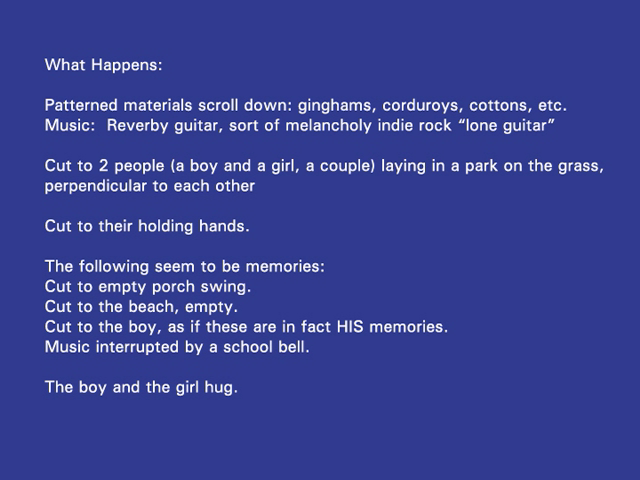

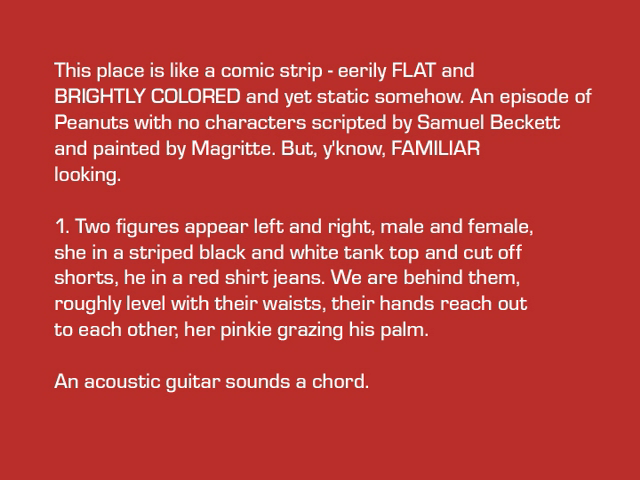
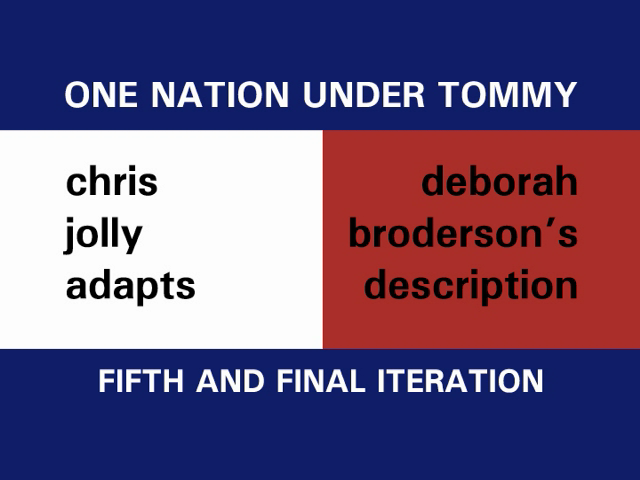

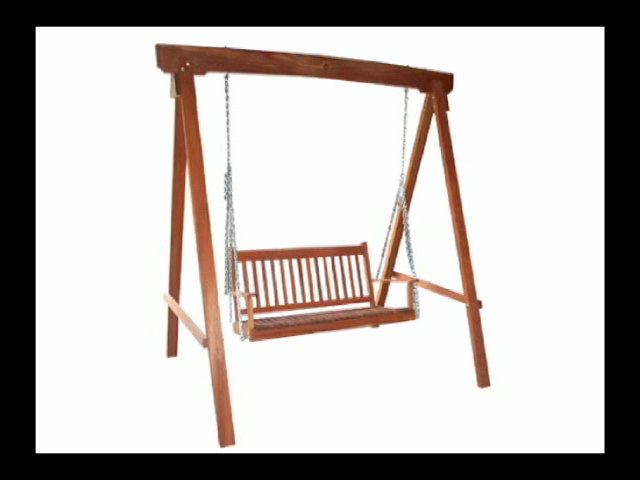
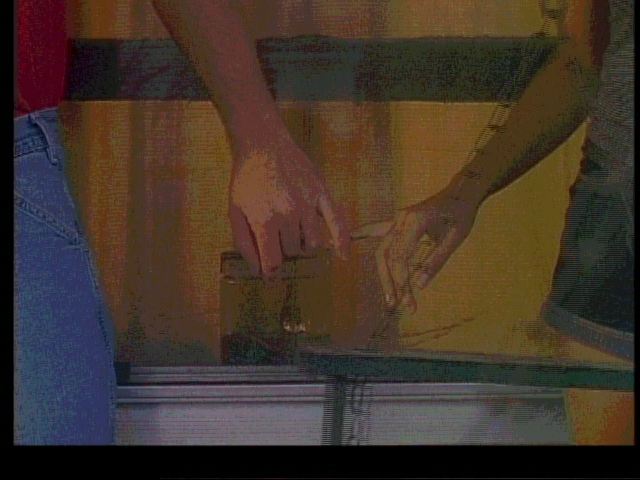
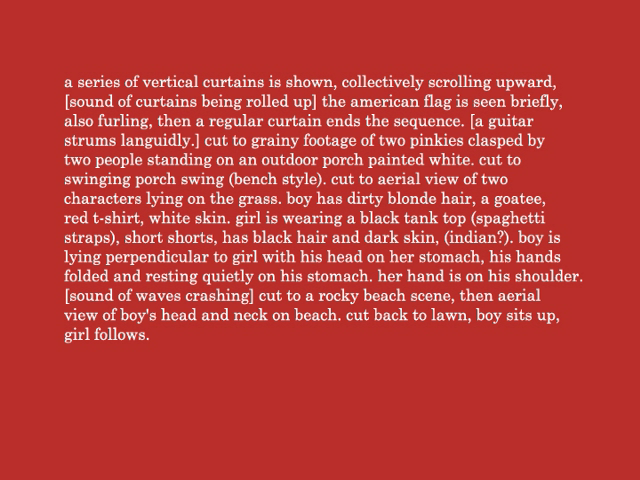
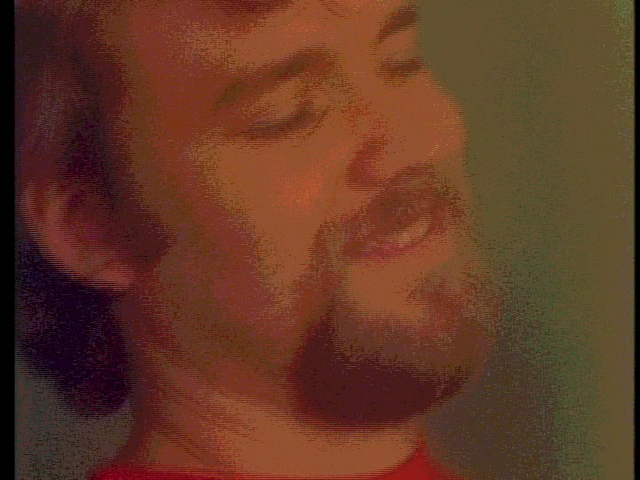
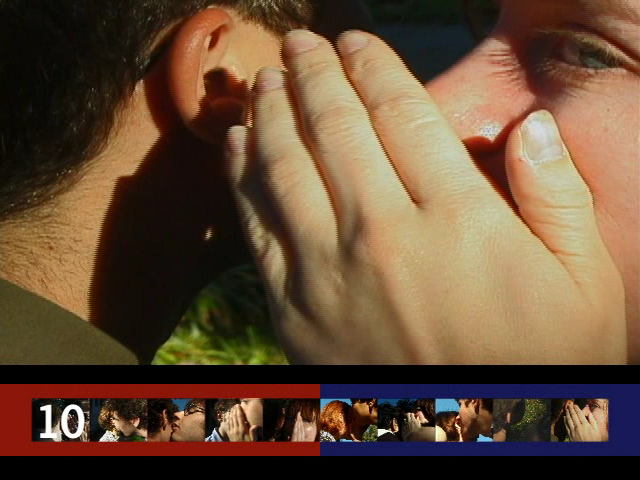
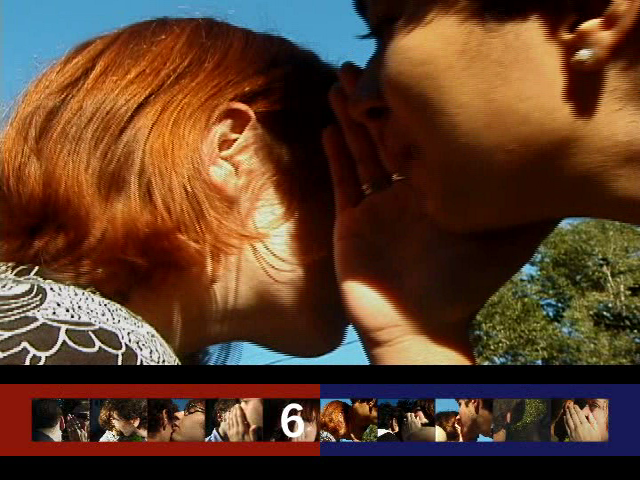
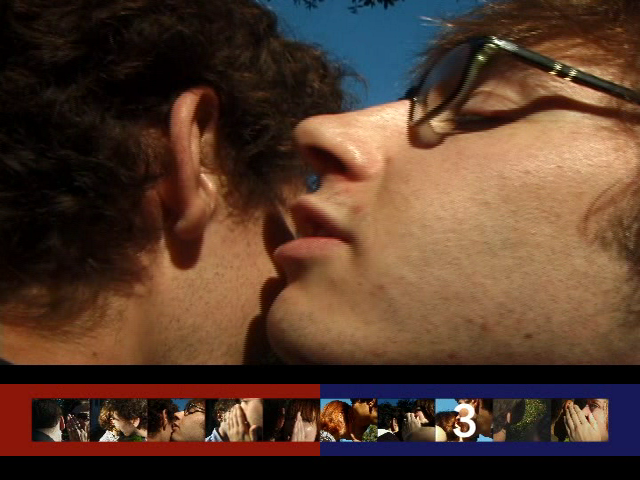
Download this at KaraGarga.
at 10:22 AM
Ant Farm - The Eternal Frame (1976)
Download this at KaraGarga.
The Eternal Frame by T.R. Uthco and Ant Farm: Doug Hall, Chip Lord, Doug Michels, Jody Procter
1975, 23:50 min, b&w and color, sound
The Eternal Frame is an examination of the role that the media plays in the creation of (post) modern historical myths. For T.R. Uthco and Ant Farm, the iconic event that signified the ultimate collusion of historical spectacle and media image was the assassination of President Kennedy in 1963. The work begins with an excerpt from the only filmed record of Kennedy's assassination: Super-8 footage shot by Abraham Zapruder, a bystander on the parade route.
Using those infamous few frames of film as their starting point, T.R. Uthco and Ant Farm construct a multi-levelled event that is simultaneously a live performance spectacle, a taped re-enactment of the assassination, a mock documentary, and, perhaps most insidiously, a simulation of the Zapruder film itself. Performed in Dealey Plaza in Dallas -- the actual site of the assassination -- the re-enactment elicits bizarre responses from the spectators, who react to the simulation as though it were the original event.
The grotesque juxtaposition of circus and tragedy calls our media "experience" and collective memory of the actual event into question. The gulf between reality and image is foregrounded by the manifest devices of Doug Hall's impersonation of Kennedy and Michel's drag transformation into Jacqueline Kennedy. Hall, in his role as the Artist-President, addresses his audience with the ironic observation that "I am, in reality, only another image on your screen."
In the uncanny simulation of the Zapruder film, however, the impersonations are not as apparent, raising the question of the veracity of the image. Image and reality collide in a post-assassination interview; while both President Kennedy and the imagic Artist-President are dead and entered into myth, Hall discusses his role like an actor having completed a film.
Through a deconstruction of the filmic image, the artists underscore the media's importance to contemporary mythology -- in which greatness is more a measure of drama than substance -- and the extent to which it can be manipulated. In light of television's transformation of the American political system -- and the later election of a movie star to the presidency -- The Eternal Frame continues to ring a truthful and haunting chord in the American consciousness.
by T.R. Uthco and Ant Farm: Doug Hall, Chip Lord, Doug Michels, Jody Procter. Video Production: Skip Blumberg, Bart Friedman, Alan Shulman, Pepper Molser, Bill Harlan, Jim Newman, T.L. Morey, Optic Nerve. Editors: Doug Hall, Chip Lord, Doug Michels, Jody Proctor. With: Ant Farm, T.R. Uthco, Stanley Marsh III.
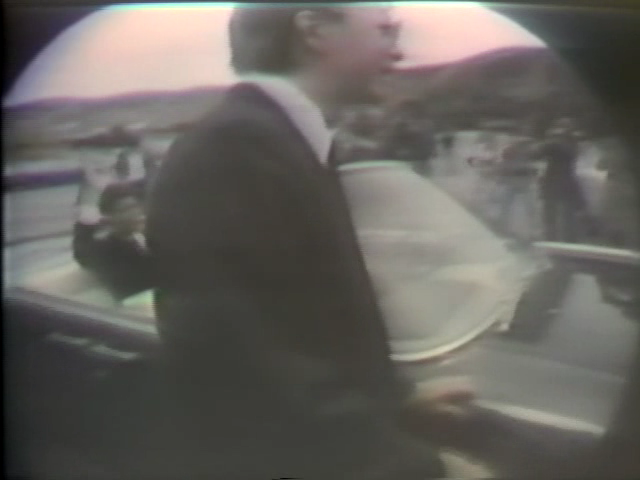
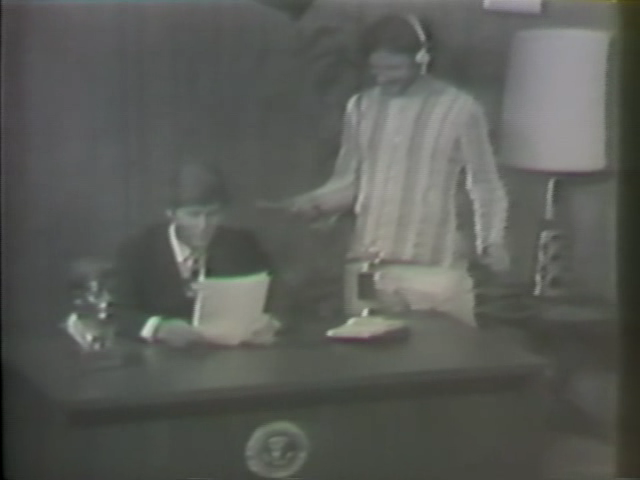
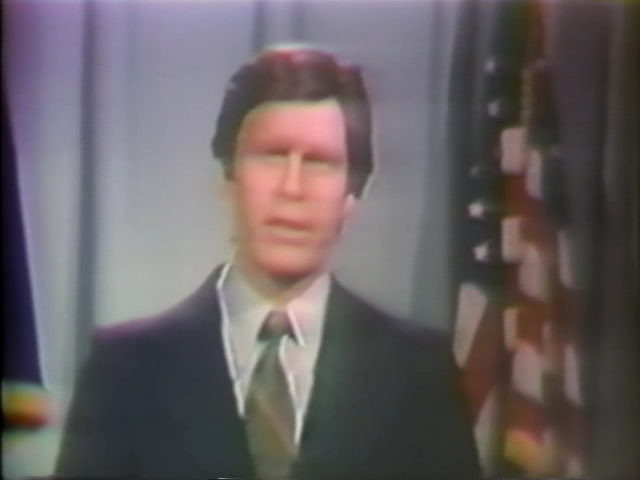
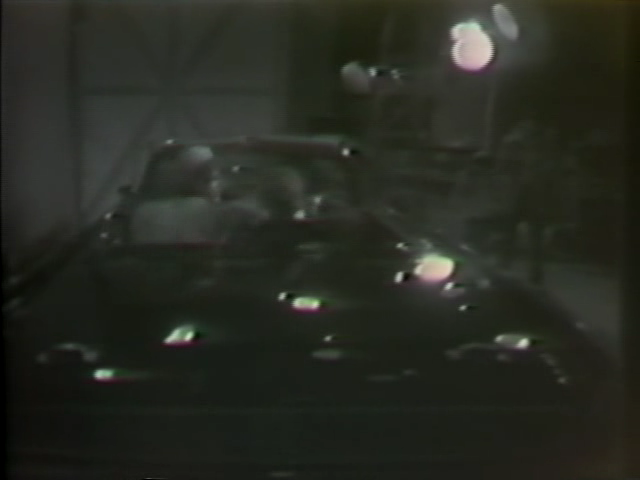
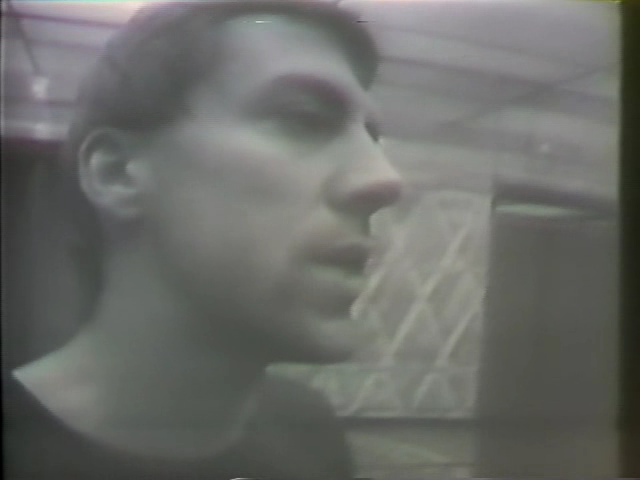
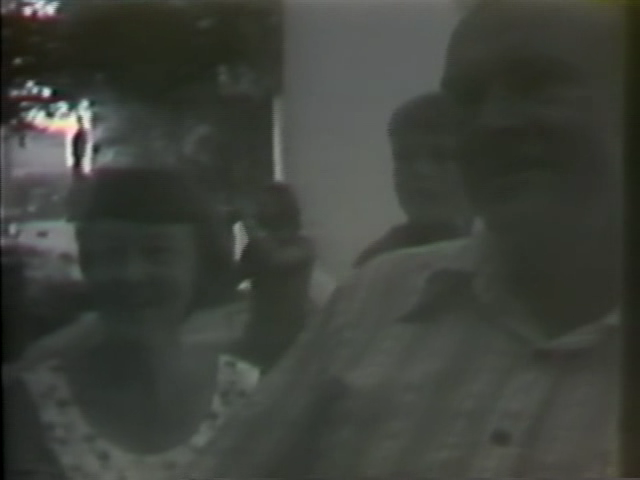 Download this at KaraGarga.
Download this at KaraGarga.
"Doug Michels, Radical Artist and Architect, Dies at 59"
June 21, 2003
By Ken Johnson
New York Times
Doug Michels, an architect and artist and a founding member
of Ant Farm, a radical art and design collective of the
late 1960's and 70's, died on June 12 at Eden Bay near
Sydney, Australia. He was 59 and lived in Houston.
Mr. Michels fell to his death while climbing alone to a
whale observation point, said his father, Robert Michels.
Part visionary futurist in the Buckminster Fuller
tradition, part Abbie Hoffman-esque social prankster, Mr.
Michels taught at universities and, from time to time,
worked for conventional architectural firms. But his most
memorable efforts were devoted to what some might call the
lunatic fringe of art and architecture.
Ant Farm became a reality in San Francisco in 1968, when
Mr. Michels met Chip Lord, another young architect. Under
the heady countercultural influences of the era, they
imagined an architectural practice that would operate more
like a rock band than a corporate business and discussed
doing "underground architecture."
"You mean like an ant farm?" a friend asked, and thus the
enterprise got its evocative name.
Two other principal partners who joined later were Hudson
Marquez and Curtis Schreier.
Ant Farm's two most famous productions were not exactly
architectural. The first, created in 1974, was "Cadillac Ranch," a
monumental outdoor sculpture in Amarillo, Tex., consisting
of 10 used Cadillacs planted nose-first in the ground.
Dating from 1948 to 1963, the cars represented the rise and
fall of the great American tail fin, regarded by some as an
emblem of national optimism and prosperity and by others as
a symbol of conspicuous consumption.
Whatever its meaning, "Cadillac Ranch" became one of those
unusual cross-over hits, like Maya Lin's Vietnam Memorial,
an avant-garde artwork that attracted countless tourists
for whom modern art was at best irrelevant.
Ant Farm's other cross-over success was a 1975 performance
work, "Media Burn," in which Mr. Michels drove a white
Cadillac through a pyramid of burning television sets.
Video recordings of "Media Burn" became staples of video
art history classes, as did "The Eternal Frame," also made
in 1975, a meticulous re-enactment of the assassination of
President John F. Kennedy, with Mr. Michels, in a pink suit
and pillbox hat, playing Jacqueline Kennedy.
Both videos reflected Mr. Michels's suspicion of the
electronic media as well as his interest in Marshall
McLuhan's theories about modern forms of communication. The
photographic image of the Cadillac crashing through the
flaming TV's became so popular that, at one time, according
to Mr. Lord, it became the top-selling art postcard in
America.
Ant Farm officially disbanded in 1978 after a fire
destroyed its San Francisco headquarters, but Mr. Michels
continued to pursue his quixotic ventures. One that
reflected his more optimistic side was "Teleport," a
futuristic room created in 1979 for the home of a Houston
banker. Outfitted with the newest forms of communications
equipment and resembling a lounge on "Star Trek," it
anticipated forms of telecommuting that Americans take for
granted today.
In a similar vein but with a comic populist twist was a
1996 proposal for "The National Sofa," conceived with the
architect James Allegro. The project was to consist of a
wide marble bench near the White House, from which visitors
could watch televised events like presidential addresses or
Congressional activities on a giant, pop-up video screen.
More romantically speculative was "Bluestar," a plan for a
space station occupied by humans and dolphins, on which Mr.
Michels worked seriously for the last 25 years of his life.
Inspired by the theory that human brains would function
more efficiently in the absence of gravity and by a belief
in the higher intelligence of dolphins, Mr. Michels
envisioned "Bluestar" as a huge glass sphere with water for
dolphins and rings, like those of Saturn, for humans.
When he died, Mr. Michels was working as a consultant for a
movie production about whales.
Douglas Donald Michels was born on June 29, 1943, in
Seattle. He studied at Catholic University in Washington
and Oxford University in England before graduating from the
Yale School of Architecture in 1967. Over the years he
taught at the University of Houston, Rice University, Texas
A&M University and the University of California at Los
Angeles. In 1999 he returned to Texas to teach at the
University of Houston.
An exhibition devoted to Ant Farm, organized by Mr.
Michels, Mr. Lord and Mr. Schreier, will open at the
Berkeley Art Museum in Berkeley, Calif., in January 2004.
at 10:20 AM
Gary Hill - Around and About (1980)
Download this at KaraGarga.
A preface of sorts to Primarily Speaking, Around & About is a speech-driven image procession that self-consciously addresses the nature of a shared reality with the viewer. Around & About is an eloquently concrete conjunction of text and image, using staccato glimpses of interiors and closed openings to provide a percussive backdrop for Hill's struggle to break through to the viewer, functioning both on the level of intimate dialogue and universal plea. Hill writes, "a kind of 'organic automation' occurs as the speech pushes the images out and on and off the screen. One's sense of time in relation to images and language becomes highly manipulated."



 Download this at KaraGarga.
Download this at KaraGarga.
at 10:18 AM
Hermaine Freed - Art Herstory (1974)
Download this at KaraGarga.
"In her brilliant video Art Herstory, Freed has restaged art history, putting herself in the model's role in numerous paintings. Time dissolves under her humorous assault—one moment in the painting, then out of the canvas and into that period, then back in the studio.
—Jonathan Price, "Video Art: a Medium Discovering Itself," Art News 76 (January 1977)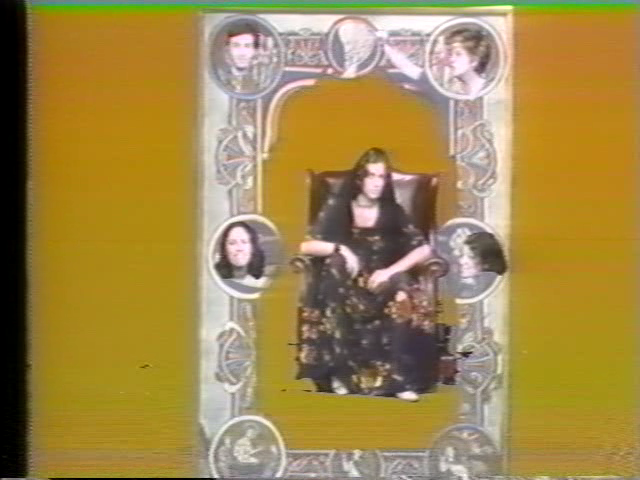
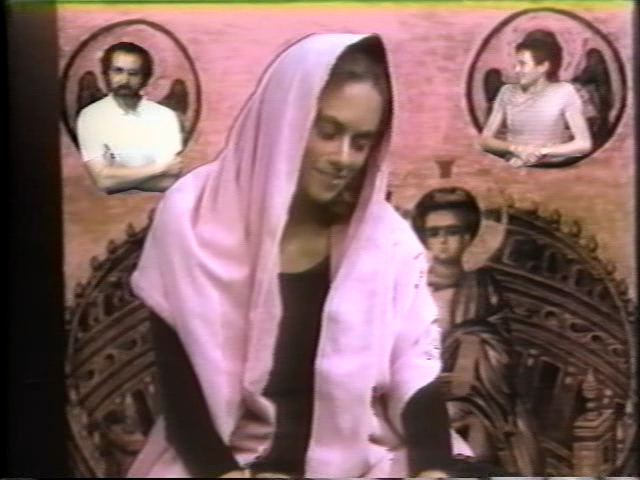

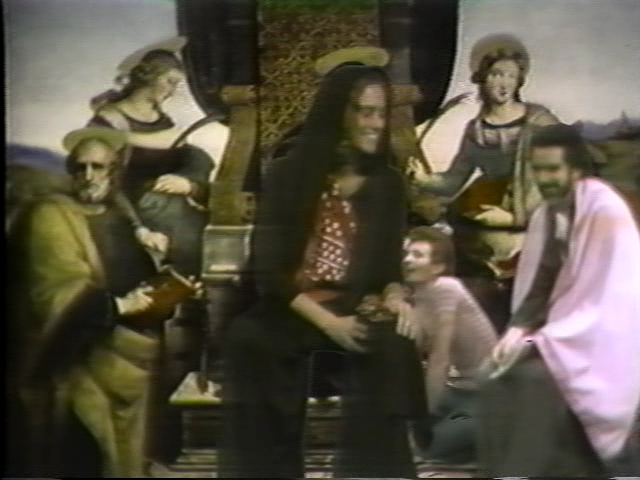
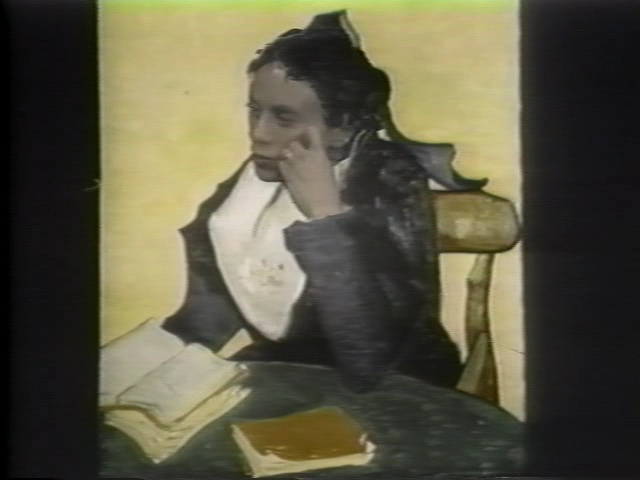 Download this at KaraGarga.
Download this at KaraGarga.
at 10:15 AM
Richard Serra - Surprise Attack (1973)
Download this at KaraGarga.
Born in 1939, Richard Serra studied English literature at the University of California in Berkeley while working at a steel mill to earn a living. He went on to receive an MFA from Yale University where he studied with painter/theorist Joseph Albers. Living in New York, Paris, and Rome on the late 60s, Serra became acquainted with artists of the New York School: Philip Guston, Robert Rauschenberg, Ad Reinhart, and Frank Stella, as well as avant-garde composer Philip Glass. Associated with the emergence of post-minimalism and process art, Serra's lead splashing sculptures were included in The Warehouse Show at the Leo Castelli Gallery in 1968, and Anti-Illusion: Procedures Materials at the Whitney Museum in 1968—both pivotal exhibitions that established a new discourse in the field of sculpture. Serra produced several films before making videotapes in the early 70s, including Television Delivers People (1973), Prisoner's Dilemma (1974), and Boomerang (1974), that examine the medium as a structure for communication.

Download this at KaraGarga.
at 10:14 AM
Robert Wilson - Stations (1982)
Saturday, February 23, 2008
Stations is an enigmatic, hauntingly vivid work, in which Wilson envisions the daydreams and fantasies of an eleven-year-old boy as a universe both magical and sinister. Resonating with Wilson's precise visual stylization, the tape's pivotal image is a young boy looking through a large window in the kitchen of his home, which becomes the portal for his dramatic, often startling inner fantasies. Fire, metal, wind, glass and water, among other elements, serve as points of departure for a series of elegant pictorial compositions and evocative metaphors. Unfolding without dialogue or spoken language, Wilson's indelible visions articulate the fear and mystery of the internal life of a child, and his relation to the outside world.
Produced by the Byrd Hoffman Foundation in association with Institut National de l'Audiovisuel (INA) and Zweites Deutsches Fernsehen (ZDF). Executive Producer: Lois Bianchi. Music: Nicholas Economou. Lighting: Danny Franks. With: Margaret Jane Linney, Robert Hock, Jamie Nodell, Larry Mataresse.

Download this at KaraGarga.
at 12:58 AM
Various - Aspect 8: Early Seminal Works (2007)
Download this at KaraGarga.
The eighth volume of Aspect, the acclaimed magazine of new media art, focuses on early works from groundbreaking artists. Segments include Doug Back's computer-controlled installation "Small Artist Pushing Technology," Robert Beck's video "Learning from Dynasty" and Joan Jonas's video "Left Side, Right Side." Also check out Tony Oursler's video "Spinout" and Cai Guo Qiang's performance "Fetus Movement II: Project for Extraterrestrials No. 9."
The mission of ASPECT is to foster a deeper and more intimate understanding of contemporary new media art by expanding access, education, and distribution of the genre. ASPECT pioneered DVD distribution of artworks and continues to set the standard for new media art publishing and distribution. ASPECT Magazine is a biannual DVD magazine of new media art. Each issue highlights 5-10 artists working in new media whose works are best documented in video or sound, including in-depth information on the artists and commentary by distinguished curators and critics. Individual issues and subscriptions are available directly from the ASPECT web site.
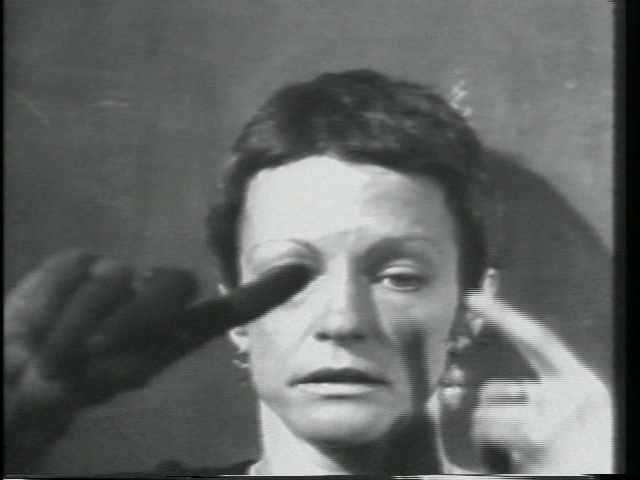
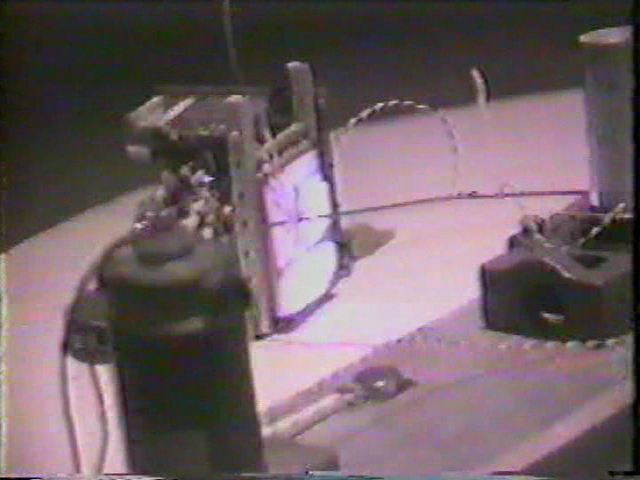
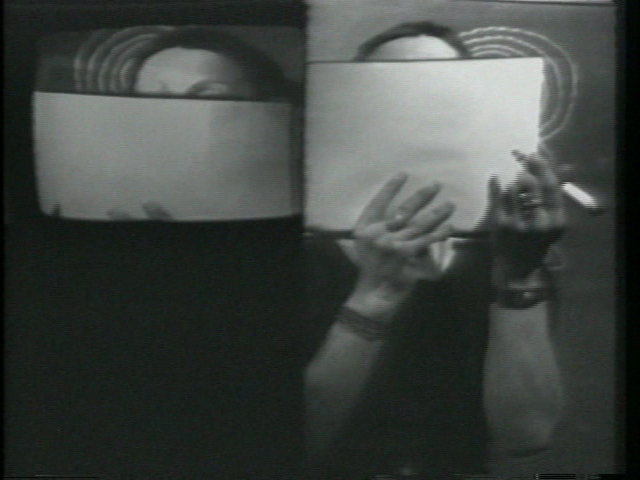
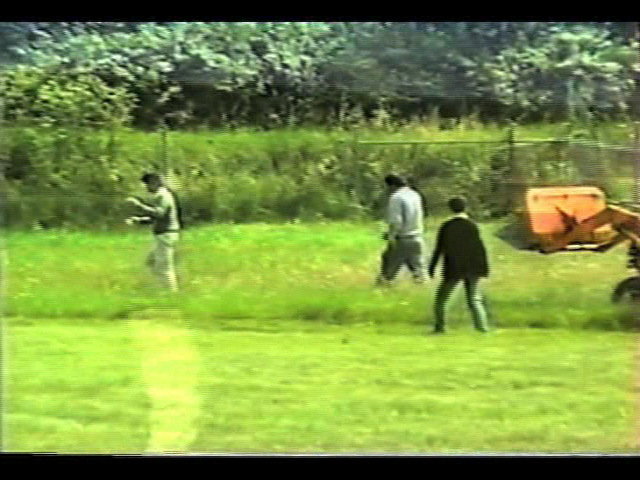
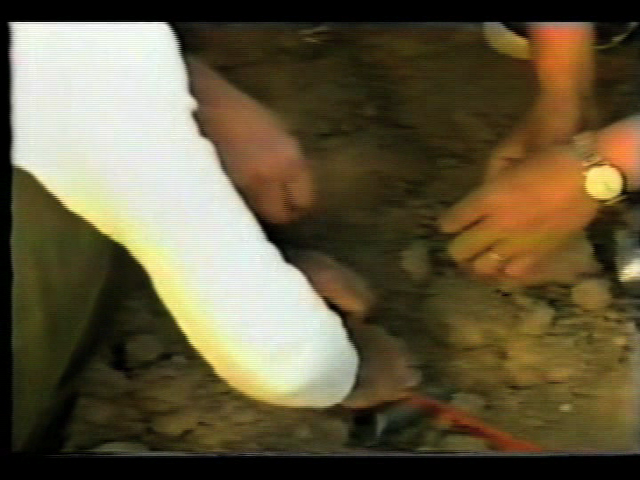
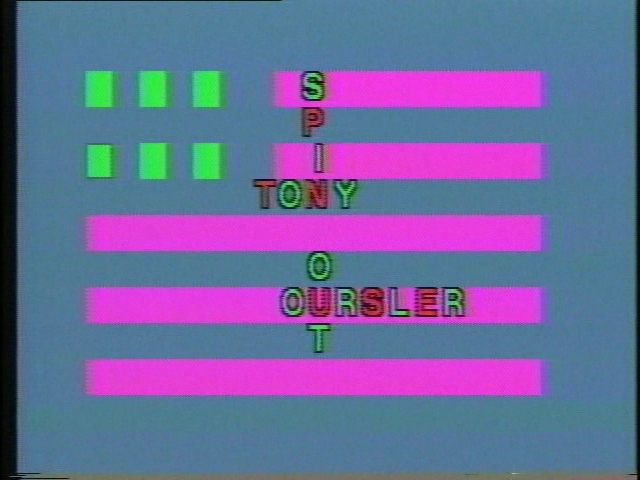


Download this at KaraGarga.
at 12:55 AM